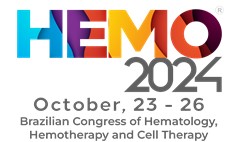
The extranodal lymphomas generally account for 25%‒40% of all lymphoma cases, with rare types such as primary breast lymphoma accounting for 0.1%‒0.5%, female genital system lymphomas for 0.5%‒1%, and adrenal lymphomas for about 1%. The diagnosis, treatment, and prognosis of these rare lymphomas are different. As Çukurova University Faculty of Medicine, we conducted a retrospective study on rare extranodal lymphomas.
MethodologyThe file data from the Cancer Registry of the Chief Physician’s Office was reviewed for the period between 2003 and 2025. Among a total of 3067 lymphoma patients, 25 cases of primary adrenal, female genital, or breast lymphoma were included in the study. Demographic data were documented, and survival duration was calculated. Parameters affecting survival were identified using SPSS. The average age of the patients was 45, with 20% being male and 80% being female. The average age of the men was 61, while the average age of the women was 41.
ResultsAmong all lymphoma patients, 632 (20.6%) had extranodal lymphoma. In 25 patients (0.8%), primary adrenal, female genital, and breast lymphomas were detected. The primary adrenal lymphoma was found in 7 patients (28%), female genital lymphoma in 8 patients (32%), and breast lymphoma in 10 patients (40%). Of these, 92% were Non-Hodgkin Lymphoma (NHL), with Diffuse large B-Cell Lymphoma (DLBCL) being the most common (48%). Burkitt lymphoma was observed with a frequency of 12% as the second most common type. All of the breast lymphoma patients were female, with an average age of 31. The second most frequent group, primary female genital lymphoma patients, had an average age of 49, and the most commonly affected organ was the ovary (16%). Compared to the literature, our patients were younger. The median survival for female genital system lymphoma patients was not reached, while the median survival for breast and adrenal lymphoma patients was 49 and 62, respectively.
ConclusionAlthough we have extensive experience in the management and treatment of primary extranodal lymphomas, a standard treatment approach has not yet been established for rare primary lymphomas. With this study, we aimed to contribute to raising awareness on this issue. In the future, we plan to collect real-world data on rare primary extranodal lymphomas in Turkey to create national data.






